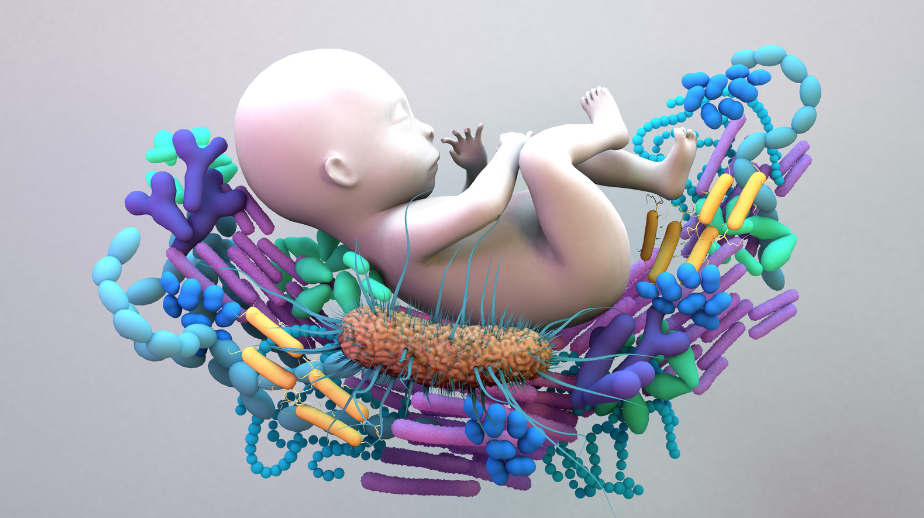From Blank Canvas to Masterpiece: How Early Colonisers Shape the Human Microbiome
Imagine a blank canvas, awaiting the artist’s brushstrokes, where the first strokes will determine the masterpiece that emerges. Just as each brushstroke adds depth and character to the painting, the early colonisers in a newborn baby’s life play a crucial role in shaping their health. This intricate ecosystem within us, known as the human microbiota, is a complex interplay of bacteria, viruses, fungi, and protozoa. At its core lies the human microbiome.
In recent times, terms like ‘microbiome’ and ‘gut health’ have become part of mainstream vocabulary, thanks to documentaries and scientific advancements. The human microbiome refers to the collective genetic material of the microbial community (microbiota) that coexists symbiotically with the human body. The Human Microbiome Project, a groundbreaking initiative, seeks to map the genomes of all microbes living on and within the human body, uncovering their relationship with human health and addressing lingering questions. For instance, we’ve known for some time that caesarean births and formula feeding impact long-term health, but the precise ‘why’ was once a mystery. These discoveries deepen our understanding of the human microbiome’s importance for overall health and open doors to improve health outcomes.
Surprisingly, our own cells are outnumbered by these microbial inhabitants at a staggering ratio of 10:1. Every inch of our body, both inside and out, is teeming with these essential microbial ecosystems. The most significant community resides within the human gut, where beneficial bacteria, known as commensals, carry out an array of vital functions, from shielding us against harmful pathogens to aiding nutrient processing and regulating fat storage.
In developed countries, the primary health threats have shifted from infectious diseases to autoimmune and inflammatory conditions like obesity, asthma, diabetes, cancer, autism, and mental health disorders. Research has linked these diseases to the delicate balance of the human microbiome.
As more people become aware of the importance of the microbiome, many parents and maternity care providers seek ways to support a healthy microbiome for newborns. The foundation of the infant gut microbiota is laid during the prenatal period, and its development reaches maturity at around two years of age, influenced by various external factors. Understanding this process empowers parents and care providers to create an optimal environment to nurture and establish a baby’s microbiome.
During pregnancy, the maternal gut microbiota, which changes throughout gestation, can pass through the maternal bloodstream/placenta to the developing baby in-utero. Therefore, maintaining a healthy maternal microbiome during pregnancy is crucial for establishing a healthy infant microbiome.
Diet plays a pivotal role in nurturing a good maternal microbiome. Traditionally, many cultures included fermented foods in their daily diet, but modern diets with processed and refined foods have reduced exposure to probiotic sources. Consuming both probiotics (live microorganisms with health benefits) and prebiotics (indigestible food stimulating beneficial gut bacteria) promotes a healthy gut microbiota. Foods like live-cultured yogurt and homemade fermented foods like sauerkraut, kimchi, kefir, and kombucha are valuable sources of probiotics, while starchy foods like sweet potatoes, pumpkin, and rice provide prebiotics. A probiotic-rich diet may also contribute to maintaining healthy vaginal microbes.
Various environmental and lifestyle factors also influence the microbiome. For instance, smoking and the use of antibiotics and antibacterial cleaning products can disrupt the microbiome. Maternal stress during pregnancy has also been found to negatively impact the infant gut microbiota.
The method of birth significantly influences the baby’s microbiome. Babies born vaginally are colonised with maternal vaginal and fecal bacteria, leading to a more beneficial gut microbiota compared to babies born via caesarean section. Research is exploring methods to optimise seeding for caesarean-born babies, including using vaginal swabs to introduce vaginal microbiota immediately after birth. Additionally, factors like water birth and en caul birth are still not fully understood in their impact on the infant microbiome.
In the postnatal period, the baby is further colonised by the microbiota they encounter in the environment. Skin-to-skin contact with the mother promotes the colonisation of the baby’s skin microbiota. Avoiding unnecessary touching of the baby by non-family members and using clothes and wraps colonised with microbes from the mother’s home environment can also assist in the colonisation process.
Infant feeding method is the second most influential factor after the type of birth in shaping the baby’s microbiome. Breastfed babies have significantly different microbiota compared to formula-fed babies, as breastmilk directly transports beneficial bacteria to the baby’s gut. Breastmilk contains a perfect balance of probiotics and prebiotics to support a healthy microbiome.
In summary, pregnancy, birth, and the early postnatal period are critical in influencing the establishment of the microbiome, which has lifelong health implications. Optimal conditions for developing a healthy infant microbiome include a prebiotic and probiotic diet during pregnancy, avoiding antibiotics, antimicrobial products, smoking, and stress, promoting vaginal birth in the mother’s environment, and early exposure to maternal microbiota through skin-to-skin contact and exclusive breastfeeding. For babies facing challenges in obtaining these conditions, researchers are working on strategies to enhance seeding and colonisation for their microbiome.
Experience an immersive journey into the realm of childbirth by embarking on the path to become a certified Birth Attendant. Discover how our transformative course could truly enrich your life while positively impacting the lives of countless women. Click this link to explore if this course is the catalyst for change you’ve been seeking.
Over the course of one year, you will gain unparalleled expertise not typically covered in traditional midwifery education. Our curriculum delves into the realms of natural and holistic birthkeeping, empowering you to make a lasting difference in the lives of the women you serve. By joining our tribe at “When Push Comes To Shove,” you become a part of the fastest-growing alternative maternity structure worldwide.
Together, we can revolutionise the world, one birth at a time.
To learn more about gut health and birth, I highly recommend this incredible film “Microbirth” click the link below to find out more:
References
- Proctor LM (2011) The Human Microbiome Project in 2011 and beyond. Cell Host and Microbe. Volume 10. DOI: 10.1016/j.chom.2011.10.001
- Matamoros S et al (2013) Development of intestinal microbiota in infants and its impact on health. Trends in Microbiology Volume 21, Issue 4. DOI: 10.1016/j.tim.2012.12.001.
- Rautava S et al (2012) Microbial contact during pregnancy and intestinal colonisation and human disease. Nature Reviews Gastroenterology and Hepatology Volume 9. DOI: 10.1038/nrgastro.2012.144.
- Biedermann L et al (2013) Smoking cessation induces profound changes in the composition of the intestinal microbiota in humans. PLoS ONE Volume 8, Issue 3. DOI: 10.1371/journal.pone.0059260
- Bengmark S (2012) Gut microbiota, immune development and function. Pharmacological Research Volume 69, Issue 1. DOI: 10.1016/j.phrs.2012.09.002.
- Cotter PD et al (2012) The impact of antibiotics on the gut microbiota as revealed by high throughput DNA. Sequencing Discovery Medicine Volume 13, Issue 70.



